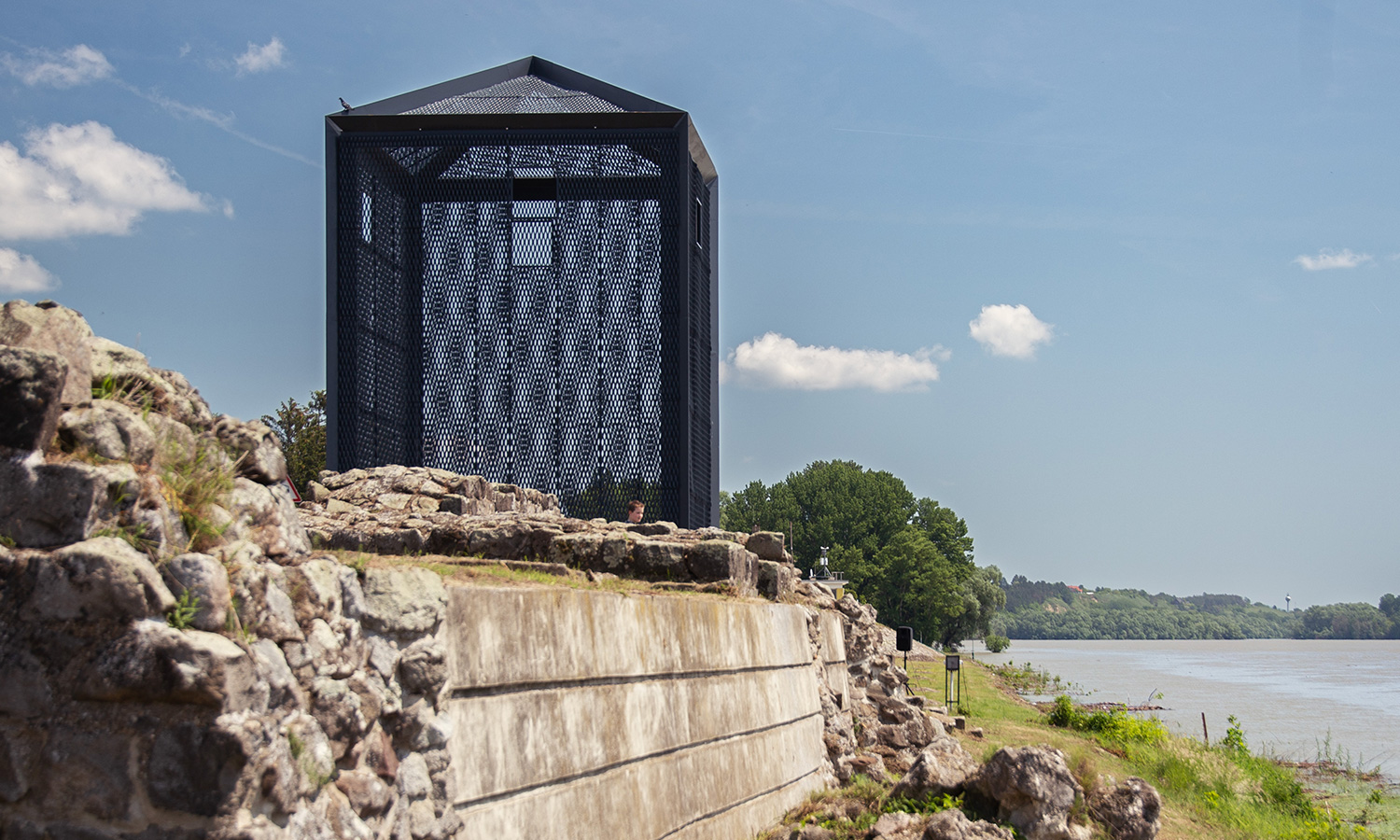Let's discover Verőce's Roman past! Late Roman port fortress on the banks of the Danube
The location of the harbor fortress is marked by a tower structure presented with modern architectural tools on the southern side of Route 2, on the Danube. This metal structure tower, visible from afar, was built above the northeast corner tower of the port fortress, evoking its block. However, the height of the corner towers of the Roman fort may have been approximately double the height of the built structure.
The port fortress in Verőce consisted of a rectangular ground plan, multi-storey central tower, which was surrounded by a high wall and connected to the bank of the Danube by a closed courtyard fortified with four corner towers. On the Danube side of the fort, to protect the walls and towers, a pier made of wooden beams was built where river warships could moor.
The port fortress - together with several others (Szob, Tahitótfalu, Dunakeszi) - was built during the reign of Emperor Valentinian I, in the early 370s AD. The emperor wanted to make the Danube a river completely controlled by the Roman army, so he installed fortified harbors on the left bank of the Danube. These small forts also controlled the Danube crossings and allowed the army to cross quickly and safely during wartime conflicts.
The archaeologically excavated and historically restored walls of the Verőce harbor fortress spectacularly demonstrate the military power of the Roman Empire's army and fleet, which made it possible to establish guard posts and fortified ports outside the empire's borders, on the left bank of the Danube.
Looking across the Szentendre Island from the harbor fortress, it is worth admiring the wonderful Danube panorama of the region. This picture does not differ much from the sight that the soldiers on guard duty in the Verőce port fortress could see when they looked over the other, imperial side of the Danube.


